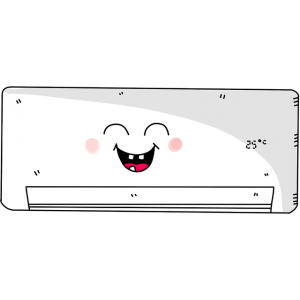Choosing Inexpensive Home Heating Duct Insulation For Forced-Air Systems
You have probably noticed your heating system ducts on TV and in films. They snake their way from the ceiling to your wall to your fridge, all of the way down to your cellar. However, did you know they may be used for over heating your home? You may even be surprised by the many tasks they can do.
Choosing Inexpensive Home Heating Duct Insulation For Forced-Air Systems
Heating ducts, also called heating ducts or air-conditioning ductswould be the insulated, galvanized steel sheets formed in an L shape under your house. Long, short bits are attached together like puzzle pieces to make a long, narrow tunnel which carries hot air (often warmed from the central ac system) throughout your residence. Considering that the ducts are insulated, the cold air that flows out of the walls is warm and moist, inducing cold condensation within your walls. The moisture creates a water seal against the cold cement walls, preventing the cold air from leaking outside. If you or your household is utilizing the ducts for heating, it is important to fix any leaks immediately, otherwise the cold condensation will collect within your heating ducts and will damage the insulation, eventually leading to a full replacement of your entire heating system.
Poor ventilation brought on by leaky roof vents, poor insulation, or improperly installed chimneys and vents can result in poor indoor air quality. With all the moisture trapped indoors, the particles could get trapped in the moist ductwork, which may become quite a problem if left unfixed. This is one reason many HVAC technicians recommend encapsulating heating ducts and air ducts to protect them from moisture and air flow. An encapsulation kit is merely a plastic sheet glued on the heating ducts, protecting them from water leaks and mold buildup.
Unfortunately, the best encapsulation techniques can only do a lot to enhance indoor air quality. If there are leaks in your heating ducts and vents, then the issue is larger than simple encapsulation. In fact, when you have identified an exact area that you suspect might have the issue, but can’t yet access as a result of poor access points, then you are in luck. It’s possible to purchase industrial fans to rapidly circulate the air in such troublesome areas. These lovers can work wonders in clearing excess moisture in your heating system and ductwork.
Choosing Inexpensive Home Heating Duct Insulation For Forced-Air Systems
Another choice is to change out your forced-air heating systems with an electrical version. Electric forced-air heating techniques work well since they can circulate air more efficiently and effectively than fan-forced systems. The best thing about an electric version is that it is quieter and less invasive than traditional forced-air heating systems. But this kind of heating ducts requires more upkeep and you may not have room for installing them under the ceiling. If your existing home only has a little attic space, or in the event that you merely don’t need to generate any alterations to your current heating system or ductwork, then an electrical version could be right for you.

Regardless of the kind of heating ducts you’ve installed, while it is electrical, gas or furnace-based, the only means to keep them from becoming clogged is to regularly insulate them. This maintenance routine will help prevent moisture damage, especially around windows and doors. One of the most frequent culprits for moisture damage is duct insulation. Loosened insulation is among the leading causes for AC issues and cracks in exterior walls. Installing a distinctive lagging cloth will assist in preventing this type of damage from occurring.
Choosing Inexpensive Home Heating Duct Insulation For Forced-Air Systems
There are many distinct kinds of insulation materials accessible to homeowners, but none are as effective as asbestos replacements. The main benefit of using asbestos filters in your heating ducts is that they will trap particles that would otherwise escape your flue or walls. If you compare the cost of a replacement layer together with the cost of fixing an AC issue, the prior is more affordable. Asbestos insulation is also much safer than most other types of insulation since it’s almost impossible to find and it doesn’t break down easily. These benefits make it the ideal choice for protecting your heating ducts.
Choosing Inexpensive Home Heating Duct Insulation For Forced-Air Systems
Because there are so many different kinds of insulation to the forced-air heating systems and other types of heating ducts, there is a good likelihood that you may not know what’s best for your circumstances. It’s a fantastic idea to seek advice from an expert to be sure that you’re getting all of the protection you want. In reality, many professionals recommend that homeowners who have asbestos insulation in their duct systems get in touch with a contractor specializing in asbestos removal to make sure the debris is properly removed.
